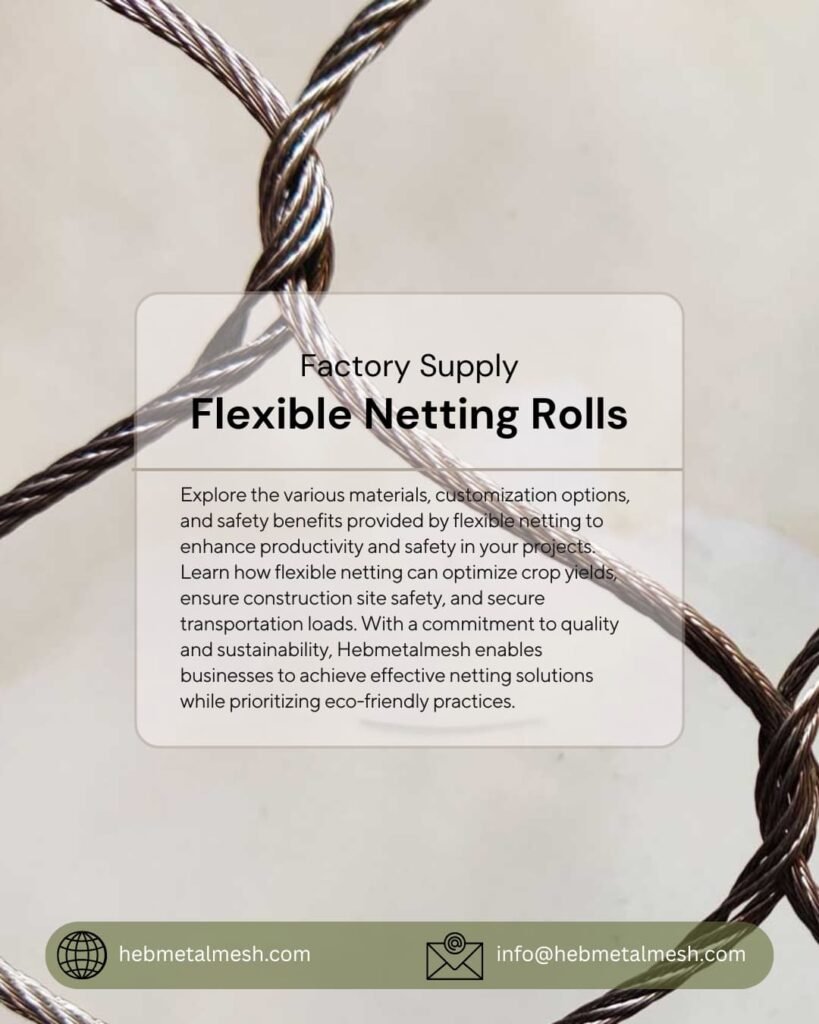Introduction
Wire cage panels have become an essential component in various domains, offering durable solutions for enclosures. These versatile panels are widely utilized in commercial, industrial, and agricultural settings, providing security and structure in activities ranging from livestock farming to warehouse management. The significance of wire cage panels lies not only in their physical properties but also in their adaptability to diverse applications, making them an ideal choice for those seeking reliable enclosure options.
This guide aims to delve into the different types of wire cage panels available, their various uses, and crucial criteria for selecting the most suitable option for specific needs. Readers can expect an in-depth exploration of materials, designs, and functionalities associated with these panels. From lightweight models suitable for smaller enclosures to heavy-duty variants designed to withstand rigorous use, wire cage panels come in various configurations that cater to unique requirements.
As we navigate through this guide, we will also examine the benefits of using wire cage panels, including their ease of installation, maintenance, and longevity. Furthermore, the article will address considerations such as aesthetic appeal and compliance with safety standards, ensuring that readers are well-informed about the implications of their choices.
By understanding the available options and their respective functionalities, individuals and businesses can make well-informed decisions that contribute to enhanced security and organization within their specified environments. This comprehensive overview of wire cage panels invites everyone, from hobbyists to professionals, to engage with the topic as they explore the myriad possibilities and applications that these panels offer. Through this exploration, we aim to equip readers with the knowledge required to select the right wire panels for their unique needs.
What Are Wire Cage Panels?
Wire cage panels are essential construction elements comprised of prefabricated mesh made from welded or woven wire. These panels are specifically designed to provide structural integrity and security in a multitude of settings. The typical construction involves either a grid of solid wires that are welded at the intersections or woven wires interlaced to form a stable and durable mesh formation. The versatility of wire panels makes them highly valuable across various applications, including agricultural, industrial, and residential uses.
The primary purpose of wire cage panels is to offer a reliable barricade or enclosure. This functionality is crucial for safeguarding livestock in agricultural settings, where these panels can be used to create safe pens or enclosures. In industrial contexts, wire mesh panels often serve as fencing to delineate areas, secure equipment, or protect hazardous materials from unauthorized access. Residential uses can include the construction of garden fencing or enclosures that keep pets safe while also providing a distinctive aesthetic appeal.
Additionally, wire cage panels can be adapted for various configurations, making them easy to customize according to specific requirements. They can be produced in different sizes and thicknesses, catering to the varying needs of users. With their robust design and durability, wire mesh panels are not only practical but also cost-effective, which further enhances their popularity. In summary, wire panels are a versatile and essential building materials that serve a myriad of functions, combining practicality and security in one effective solution.
Common Applications of Wire Cage Panels
Wire cage panels are versatile structures that serve a variety of purposes across different industries and applications. Their durability, flexibility, and ease of installation make them a preferred choice for both personal and commercial use. Below are some of the most common applications of wire netting panels:
- Animal Enclosures: Wire cage panels are widely used for creating enclosures for poultry and pets. In the case of poultry, these panels help provide a safe and controlled environment where chickens or other fowl can roam freely while being protected from predators. For pets, wire cage panels can be used to build play areas or secure spaces for smaller animals such as rabbits or guinea pigs.
- Gardening: In the realm of gardening, wire cage panels serve as essential supports for climbing plants or vines. They can be utilized as trellises, allowing plants to grow upward, thereby optimizing space in smaller gardens. Additionally, these panels can function as garden fencing, providing protection against herbivorous pests without obstructing sunlight.
- Warehousing: In industrial contexts, wire cage panels are frequently employed in warehouses to create organized storage systems. They are used to form cages or partitions that help secure and segregate different items or materials. This prevents damage and loss while ensuring accessibility during inventory checks.
- Security Fencing: Wire cage panels are also popular for security fencing applications. They provide a robust barrier that can deter unauthorized access to high-security areas, such as construction sites or commercial properties. Their visibility ensures that surveillance is maintained while offering a formidable physical barrier.
These applications illustrate the functionality and adaptability of wire cage panels, making them invaluable in various contexts. Their multifaceted uses highlight their importance in establishing safe, organized, and efficient environments.
Types of Wire Cage Panels
Wire cage panels are versatile structures used in various applications, ranging from agricultural settings to industrial environments. They come in several types, each characterized by distinct materials and designs that cater to specific needs. Understanding these variations is essential for selecting the appropriate wire panels for your project.
One of the most common materials used in the manufacture of wire cage panels is galvanized steel. This material is known for its durability and resistance to corrosion, making it ideal for outdoor applications. Galvanized steel panels typically have a robust mesh design that allows for optimal airflow while providing a secure barrier. These features make them suitable for agricultural purposes, such as fencing for livestock or crop protection.
Another popular option is aluminum wire cage panels, which are lighter than their steel counterparts. Aluminum panels resist rust and corrosion, making them preferable in humid environments. Their lightweight nature allows for easy installation and mobility. Typically, these panels are used in applications where portability and quick setup are necessary, such as temporary fencing at events or construction sites.
Plastic-coated wire cage panels offer yet another alternative. These panels usually comprise a core material, such as steel, coated with a layer of plastic to increase durability and aesthetic appeal. The plastic coating helps prevent rust and adds a touch of color, making them a popular choice for decorative fencing in gardens or residential areas. The mesh size and panel thickness can vary, allowing for customization based on security needs and enclosure size.
In addition to different materials, wire cage panels come in various designs, including foldable and portable options. Foldable wire cage panels are ideal for individuals who need a temporary setup, as they can be easily transported and stored when not in use. On the other hand, portable options allow for relocation without disassembling the entire system, providing added flexibility in their application.
Key Benefits of Using Wire Cage Panels
Wire cage panels have gained widespread recognition due to their numerous advantages across various industries. One of the most significant benefits is their durability. Made from high-quality materials, these panels are designed to withstand harsh weather conditions, heavy use, and potential damage. This longevity makes them a favored option for outdoor applications such as animal enclosures, storage units, and fencing solutions.
Another noteworthy advantage of wire cage panels is their ease of installation. Typically, these panels are lightweight and can be assembled quickly without the need for specialized tools or skills. This user-friendly aspect results in reduced labor costs and time savings, making them a practical solution for both commercial and residential projects.
Cost-effectiveness is also a prominent benefit. While initial purchasing costs may vary depending on the type and size of the wire panels, their long lifespan, low maintenance needs, and multifunctional use reduce overall expenses. For instance, a business that requires a storage solution can employ wire cage panels to create efficient and secure storage areas, ultimately leading to substantial savings over time.
Moreover, these panels are exceptionally versatile in their applications. From securing livestock on farms to creating boundaries in warehouses, wire cage panels can serve various purposes. Their modular nature allows for customization, adapting to specific needs, which positions them as an ideal choice for many users.
Lastly, the security that wire cage panels offer cannot be overlooked. Their sturdy construction provides an effective barrier against unauthorized access, be it in commercial settings or residential backyards. Real-life examples include warehouses that rely on these panels to protect valuable assets or pet owners using them as safe enclosures for animals.
In conclusion, the durability, ease of installation, cost-effectiveness, versatility, and security that wire cage panels provide make them a reliable option for many different applications.
Factors to Consider When Choosing Wire Cage Panels
When selecting wire cage panels for various applications, several essential factors play a crucial role in ensuring the effectiveness, durability, and suitability of the product for specific needs. Understanding these factors can greatly enhance decision-making and project outcomes.
First, consider the intended use of the wire cage panels. These panels can serve multiple purposes, including pet enclosures, security fencing, storage solutions, and agricultural applications. Identifying the primary function will help narrow down the types of panels best suited for the job, as specific designs cater to particular needs.
Longevity is another fundamental aspect; therefore, assessing the required durability is vital. Wire cage panels are available in various materials, such as galvanized steel or PVC-coated wire, each offering different levels of strength and resistance to wear. Choosing a more robust option is advisable for high-stress environments or areas prone to vandalism.
Environmental conditions also impact the selection process. Depending on the location, wire cage panels should possess weather-resistant features to mitigate the effects of rain, humidity, or extreme temperatures. Panels designed to withstand such conditions will ensure longevity and reduce maintenance costs over time.
Size and dimensions are critical as well. It is essential to measure the area where the panels will be installed carefully. Ensuring the correct size will facilitate proper installation and functionality, preventing issues related to overcrowding or insufficient space.
Finally, consider ease of installation and budget constraints. Some wire cage panels come with pre-assembled sections, making installation more straightforward. Weighing the project’s budget against the potential value and quality of the wire panels is paramount in making an informed decision, balancing affordability with performance and durability.
Installation Tips for Wire Cage Panels
Installing wire cage panels can provide a sturdy solution for various applications, from gardening to creating secure enclosures for animals. To ensure a successful installation, it is essential to follow a structured approach that encompasses preparation, tool selection, and execution.
Initially, measuring and planning are crucial. Begin by determining the area where the wire cage panels will be installed. Utilize a measuring tape to accurately gauge the dimensions, ensuring that you account for any irregularities in the terrain. Additionally, drawing a rough sketch can help visualize the layout and identify any potential challenges that may arise during installation.
Next, collect the necessary tools for the installation process. Commonly required items include a drill, screws, wire cutters, pliers, and a level for ensuring that the panels are installed evenly. Depending on the specific project, you might also need stakes, brackets, or concrete to secure the wire panels in place. Having all tools on hand before beginning will streamline the process and reduce delays.
The installation of wire panels can be executed by following a step-by-step guide. First, mark the positions for the panels on the ground, confirming that the locations align with your planned layout. If the panels require anchoring, prepare the ground by digging holes or setting concrete anchors as necessary. Proceed to attach the wire cage panels securely, ensuring each panel connects properly to maintain stability. Utilize the level to check the alignment as you work.
It is also important to consider safety during installation. Wear gloves to protect your hands from sharp edges, and safety goggles to shield your eyes from debris. Be wary of potential hazards, such as loose wires or unstable ground, which could lead to accidents.
By following these installation tips and taking the necessary precautions, you can successfully set up wire cage panels for your intended use, ensuring durability and functionality for years to come.
Maintaining Your Panel
Proper maintenance of wire cage panels is essential to ensure their longevity and effectiveness, regardless of their specific application. Regular inspections should be performed to identify any signs of damage or wear that could compromise their structural integrity. During these inspections, look for bent wires, rust, or any other form of deterioration. By catching issues early, you can prevent further damage and costly repairs down the line.
Cleaning wire cage panels can significantly prolong their life. It’s advisable to wash the panels with a mild soap solution and a soft brush to remove dirt, debris, and any potential contaminants. Avoid using harsh chemicals that may corrode the metal. After cleaning, make sure to rinse thoroughly to remove any soap residue. In humid or wet conditions, inspect the cage panels frequently for signs of rust. If rust is detected, it should be addressed immediately to prevent its spread. Applying a protective coat of paint designed for metal after cleaning can help safeguard your wire cage panels against future rusting.
When it comes to repairs, it is important to address any damage promptly to maintain the panels’ functionality. For minor bends, the use of pliers can often return the wire to its original shape. In cases of significant damage, replacing the affected sections of the wire cage panels may be necessary. Replacement parts should match the original design for optimal performance. Additionally, ensuring that the panels are properly secured to their supports or posts can help mitigate movement and reduce wear over time.
By implementing these maintenance strategies, you can effectively extend the life of your wire cage panels and ensure they serve their intended purpose efficiently. Remember to stay proactive in your upkeep efforts for the best results.
Conclusion
In summary, wire cage panels serve a versatile and essential function across various applications, including agriculture, construction, and storage. Throughout this guide, we have explored the different types of wire cage panels available, highlighting their specific characteristics, uses, and benefits. Understanding the unique attributes of each variety—such as welded wire panels, chain-link panels, and expandable cages—allows users to make informed decisions that best suit their particular needs.
The utility of wire cage panels is evident in their ability to provide security and structure, whether it is for containing livestock, storing materials, or reinforcing a construction site. Users must consider factors such as the material composition, size, and design when selecting wire panels for their intended use. These considerations impact not only the durability and effectiveness of the cages but also their overall adaptability in various settings.
Moreover, it is crucial for potential buyers to reflect on their specific requirements and preferences. Factors such as the environment in which the wire panels will be deployed, the intended load capacity, and whether mobility is necessary should guide the selection process. Engaging with product reviews and consulting with industry experts can further enhance decision-making. As markets continue to evolve, important new products and resources are frequently becoming available, enabling users to find solutions that perfectly align with their needs. This ongoing innovation underlines the importance of staying informed about available options in order to optimize the effectiveness of wire cage panels in practical applications.


